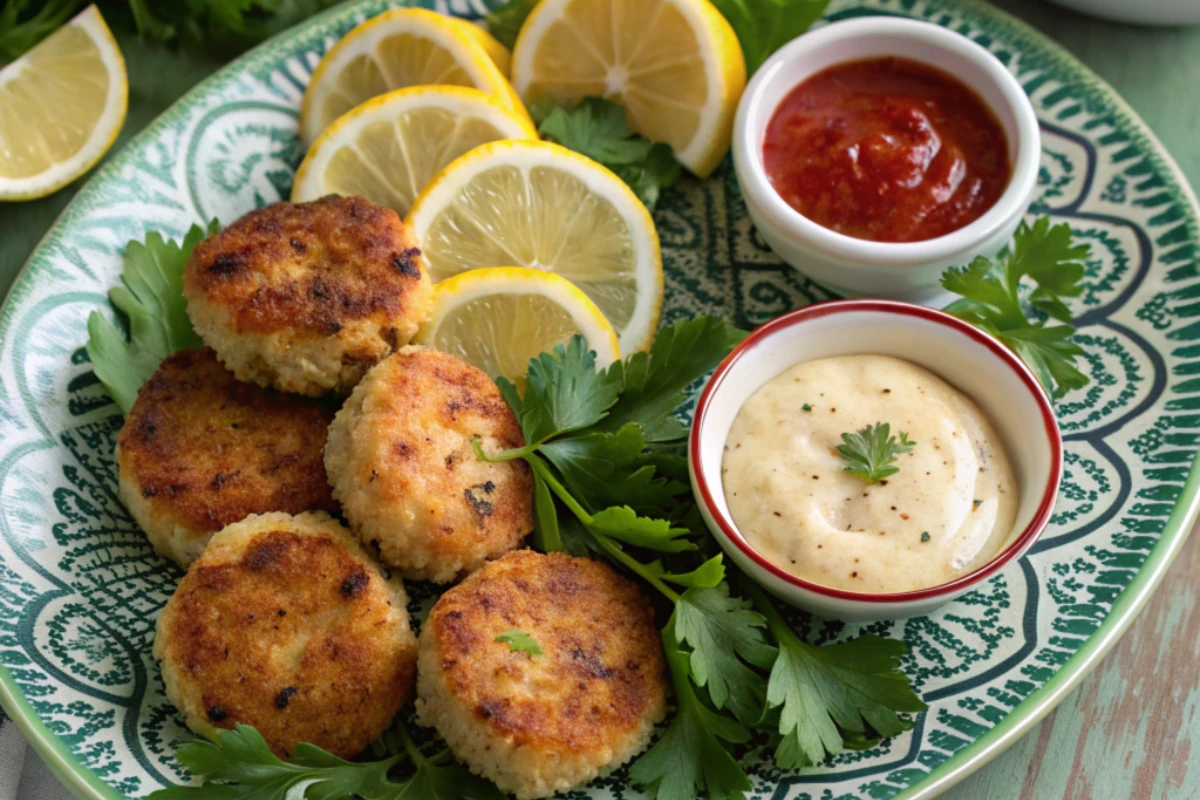Crab cakes are a timeless seafood delicacy cherished for their flaky interiors and perfectly crispy exteriors, but is it better to fry or bake crab cakes? But when it comes to preparing these tasty treats at home, there’s an ongoing debate: is it better to fry or bake crab cakes? Each method has its merits, with frying offering a rich, indulgent crunch and baking providing a lighter, healthier alternative. In this article, we’ll dive deep into the frying vs. baking debate, exploring their pros and cons, nutritional differences, expert tips, and sample recipes. Whether you’re chasing the perfect crisp or aiming for a guilt-free indulgence, we’ve got you covered!
Introduction to the Crab Cake Debate
The Popularity of Crab Cakes
Crab cakes hold a special place in seafood cuisine. From the iconic Maryland-style variety to creative gourmet adaptations, these versatile patties are beloved for their rich crabmeat and savory seasonings. Their popularity extends across dining tables, from casual gatherings to upscale events, making them a universal favorite.
The Key Cooking Methods: Frying and Baking
When it comes to cooking crab cakes, the two most common methods are frying and baking. Frying delivers an ultra-crispy crust with indulgent flavors, while baking offers a health-conscious option that doesn’t skimp on taste. Choosing between the two often boils down to personal preferences, dietary goals, and the occasion. Each method has its nuances, and we’ll break them down in detail throughout this article.
Whether you prefer your crab cakes fried to golden perfection or baked to a light crisp, understanding the benefits and challenges of each method will empower you to make the ideal choice for your next meal.
Frying Crab Cakes: Advantages and Disadvantages
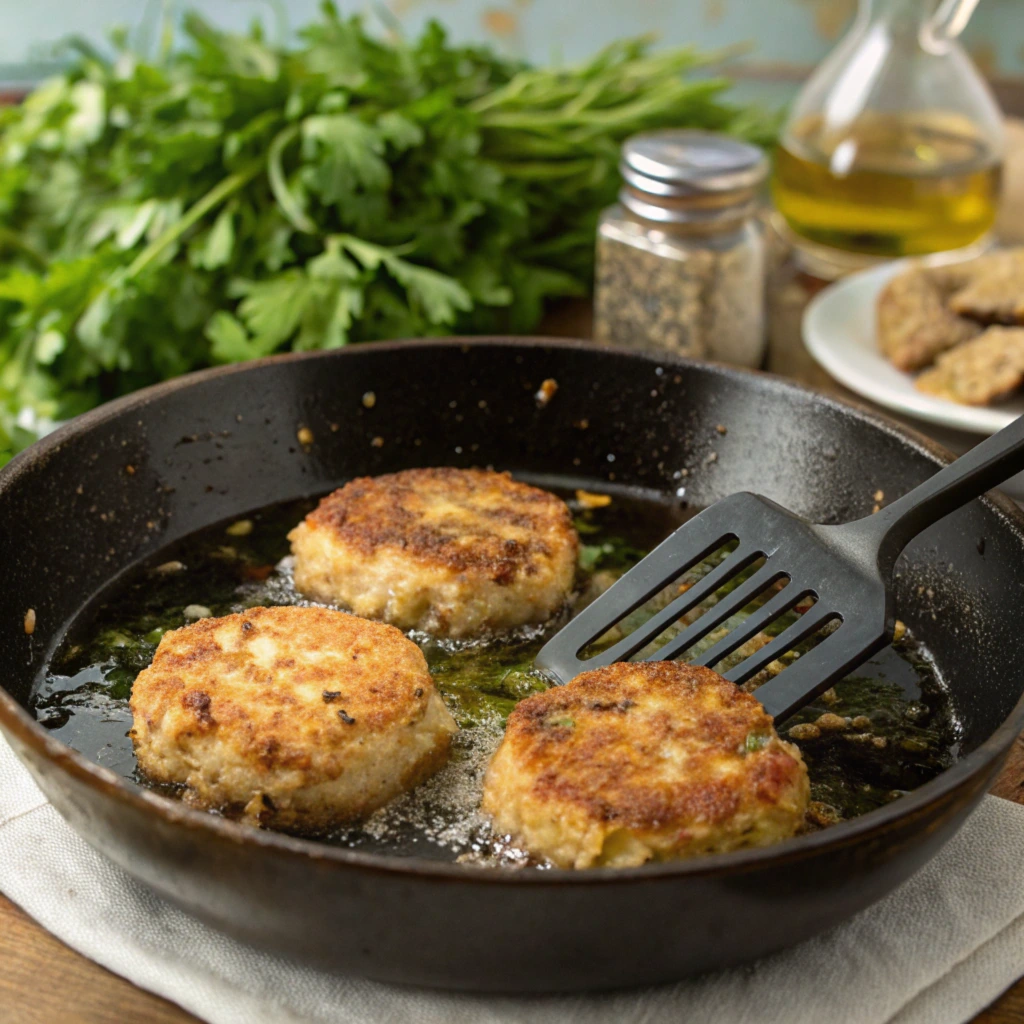
Why Fry Crab Cakes?
When it comes to crispy seafood treats, many wonder, is it better to fry or bake crab cakes? Frying is often considered the traditional method, celebrated for its ability to create a crispy, golden-brown crust. The process involves cooking the patties in hot oil, which seals in the flavors and provides a satisfying crunch. If you love that indulgent, rich taste, frying is a technique worth mastering.
Pros of Frying Crab Cakes
Frying comes with a range of benefits that make it a popular choice for many home cooks and chefs:
- Crispy Exterior and Rich Flavor: Frying produces an unbeatable crispiness that enhances the texture of crab cakes. The hot oil locks in moisture while forming a golden crust that’s as visually appealing as it is delicious.
- Quick Cooking Times: In just a few minutes per side, fried crab cakes are ready to serve, making this method ideal for those short on time.
- Bold Taste: The frying process brings out bold, savory flavors, perfect for those craving an indulgent treat.
Cons of Frying Crab Cakes
While frying has its perks, it’s not without drawbacks:
- Higher Calories and Fat Content: Fried crab cakes are higher in calories and fat due to oil absorption during cooking. This may not align with health-conscious diets.
- Risks of Overcooking or Greasiness: Timing is everything when frying. Overcooking can lead to dry interiors, while undercooking risks a greasy texture.
- Requires Attention: Frying demands close monitoring to ensure consistent heat and prevent burning.
If you’re willing to put in the effort and don’t mind the additional calories, frying can deliver a satisfying experience with unbeatable crispiness.
Baking Crab Cakes: Advantages and Disadvantages
Why Bake Crab Cakes?
Is it better to fry or bake crab cakes if you’re looking for a healthier option? Baking offers a lighter alternative, relying on dry heat to cook the patties without excessive oil. This method is ideal for those looking to enjoy crab cakes without compromising their dietary goals. Additionally, baking is perfect for larger batches, making it a convenient option for parties or family dinners.
Pros of Baking Crab Cakes
Baking comes with several advantages, especially for those prioritizing health and convenience:
- Healthier Alternative with Lower Fat: Baking eliminates the need for large amounts of oil, resulting in crab cakes with fewer calories and less fat. This method is perfect for creating low-fat seafood dishes that don’t sacrifice flavor.
- Easier for Large Batches: Baking allows you to cook multiple crab cakes simultaneously on a single baking sheet, saving time and effort.
- Even Cooking: With consistent heat, baking ensures even doneness throughout the patties.
Cons of Baking Crab Cakes
However, baking has its own challenges that are worth considering:
- Potential for Dryness or Uneven Browning: Without oil, baked crab cakes can dry out or develop spotty browning. Adding a light brush of oil can help mitigate this issue.
- Longer Cooking Time: Compared to frying, baking takes longer, which may not be ideal for quick meals.
Baking is a go-to option for health-conscious eaters and those cooking for a crowd. With a little care, such as brushing the cakes with oil and flipping them halfway, you can achieve a perfectly crisp result while keeping the meal light and wholesome.
Comparison of Frying vs. Baking
Crispiness and Texture: Frying Wins
When it comes to achieving the ultimate crispy crust, frying crab cakes takes the crown. The hot oil creates a golden, crunchy exterior that perfectly contrasts with the tender, flaky interior. This texture is tough to replicate with baking, even with techniques like brushing oil on the patties.
Health and Calories: Baking Wins
On the flip side, baking crab cakes is the clear choice for those aiming to cut calories and fat. By eliminating the need for frying oil, baked crab cakes are lighter without compromising on flavor. This makes them a great option for health-conscious diners or those keeping an eye on cholesterol levels.
Flavor and Convenience: A Mixed Verdict
Frying often yields bolder, indulgent flavors due to the caramelization and absorption of oil. However, baking stands out for its hands-free convenience—perfect for when you’re preparing larger batches. Both methods shine in their own right, depending on what you prioritize for your meal.
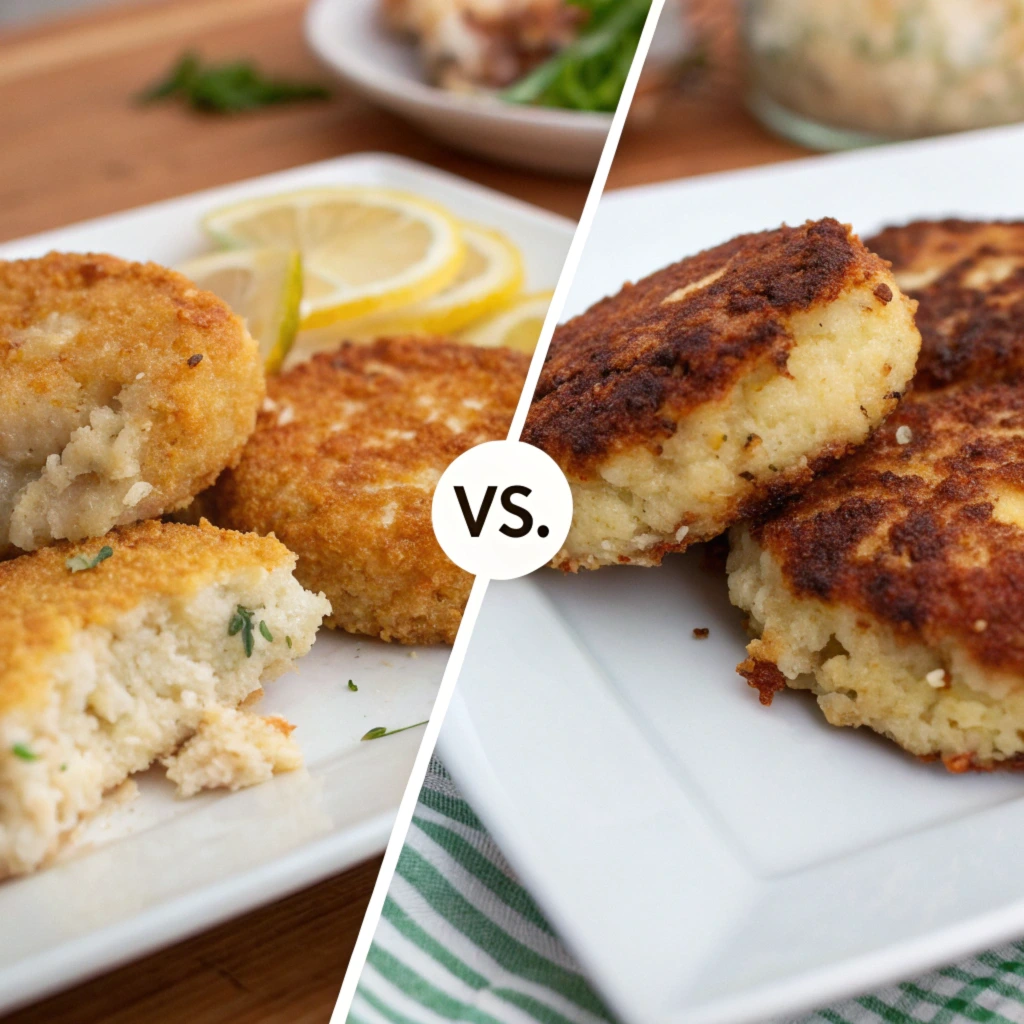
Expert Tips for Perfect Crab Cakes
Choosing the Best Crab Meat
The secret to amazing crab cakes lies in the crab meat. Always opt for fresh lump or jumbo lump crabmeat for the best texture and flavor. Avoid canned options, as they often lack the sweetness and freshness required for standout crab cakes.
Preparing the Mixture: Binding and Seasoning
A well-balanced mixture is critical to prevent crab cakes from falling apart. Use a combination of eggs, mayo, and breadcrumbs as binders, and season with Old Bay, lemon zest, or parsley to enhance the natural crab flavor. Remember, less is more—let the crab shine!
Cooking Techniques for Frying
- Ensure the oil is hot enough before frying. A temperature around 350°F works well.
- Use high-smoke-point oils like canola or vegetable oil.
- Cook in small batches to maintain consistent heat and prevent crowding.
Cooking Techniques for Baking
- Brush the tops of crab cakes lightly with oil to encourage browning.
- Bake at 400°F, flipping halfway for even cooking.
- To achieve a golden crust, finish with a quick broil for 1-2 minutes.
For more crab-centric recipes, check out the Master Perfect Crab Balls Recipe. It’s a delicious twist on classic seafood dishes!
Nutritional and Cost Analysis
Nutritional Differences Between Frying and Baking
When it comes to nutrition, the method you choose for cooking crab cakes can significantly impact the calorie and fat content. Fried crab cakes are undeniably higher in calories due to the absorption of oil during cooking. A standard serving of fried crab cakes can contain up to 285 calories and 18 grams of fat. While this makes for a decadent treat, it may not align with a lighter meal plan.
On the other hand, baked crab cakes are a healthier option, offering about 120 calories and just 2 grams of fat per serving. Baking eliminates the need for added oil, making it ideal for those seeking a low-fat seafood dish. Additionally, the lack of grease allows the crab’s natural sweetness to shine.
Cost Implications of Frying and Baking
From a cost perspective, frying can be slightly more expensive than baking due to the amount of oil required. High-quality oils like canola or avocado oil, often used for frying, can add up over time. Meanwhile, baking is cost-effective since it relies solely on an oven and a light brushing of oil. Both methods, however, remain affordable ways to prepare delicious crab cakes at home.
Sample Recipes for Fried and Baked Crab Cakes
Classic Fried Crab Cake Recipe
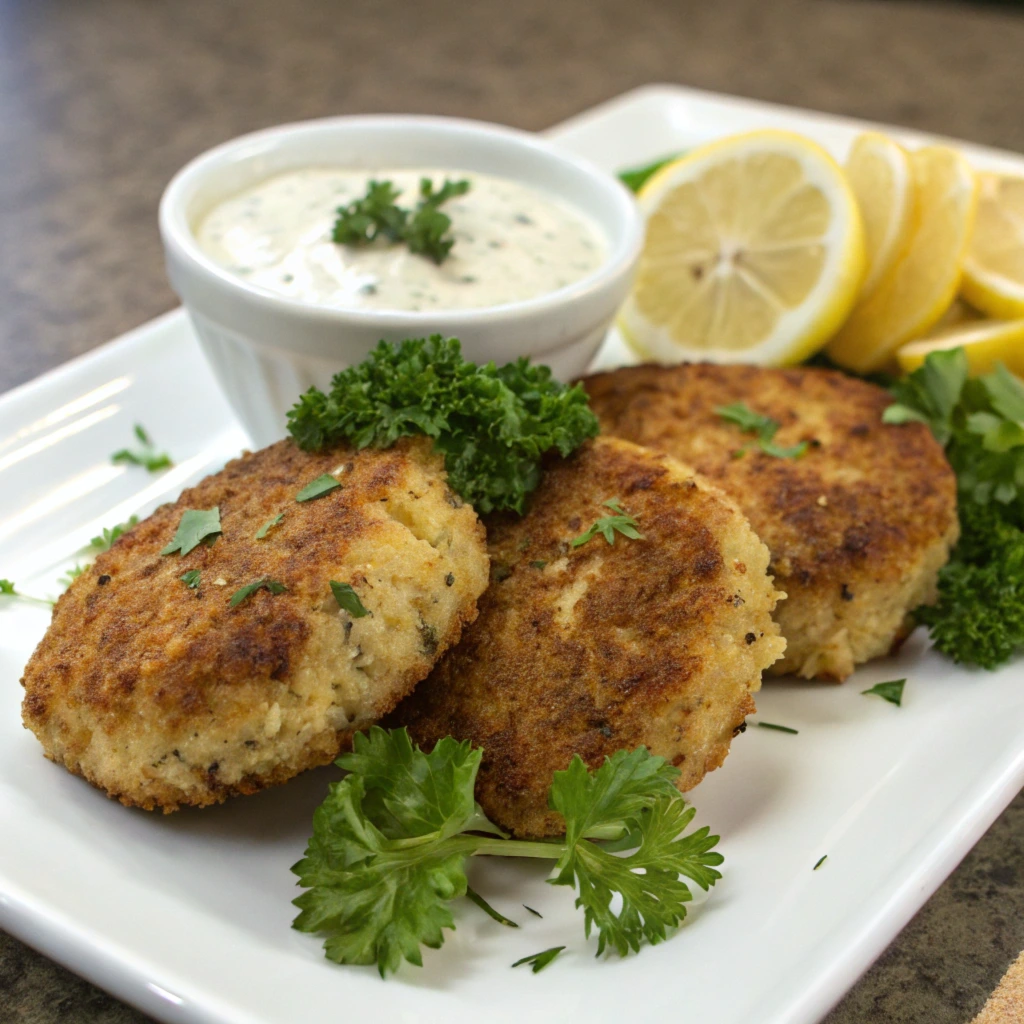
For a traditional take on crab cakes, try frying. Here’s a simple recipe:
- Ingredients:
1 lb fresh lump crabmeat, 1 beaten egg, ¼ cup mayonnaise, ½ cup panko breadcrumbs, 1 tsp Old Bay seasoning, oil for frying. - Directions:
- Mix ingredients gently to avoid breaking the crabmeat.
- Shape into patties and refrigerate for 15 minutes to firm up.
- Heat oil in a skillet to 350°F and fry patties for 3-4 minutes per side until golden brown.
- Drain on a paper towel and serve hot.
Simple Baked Crab Cake Recipe
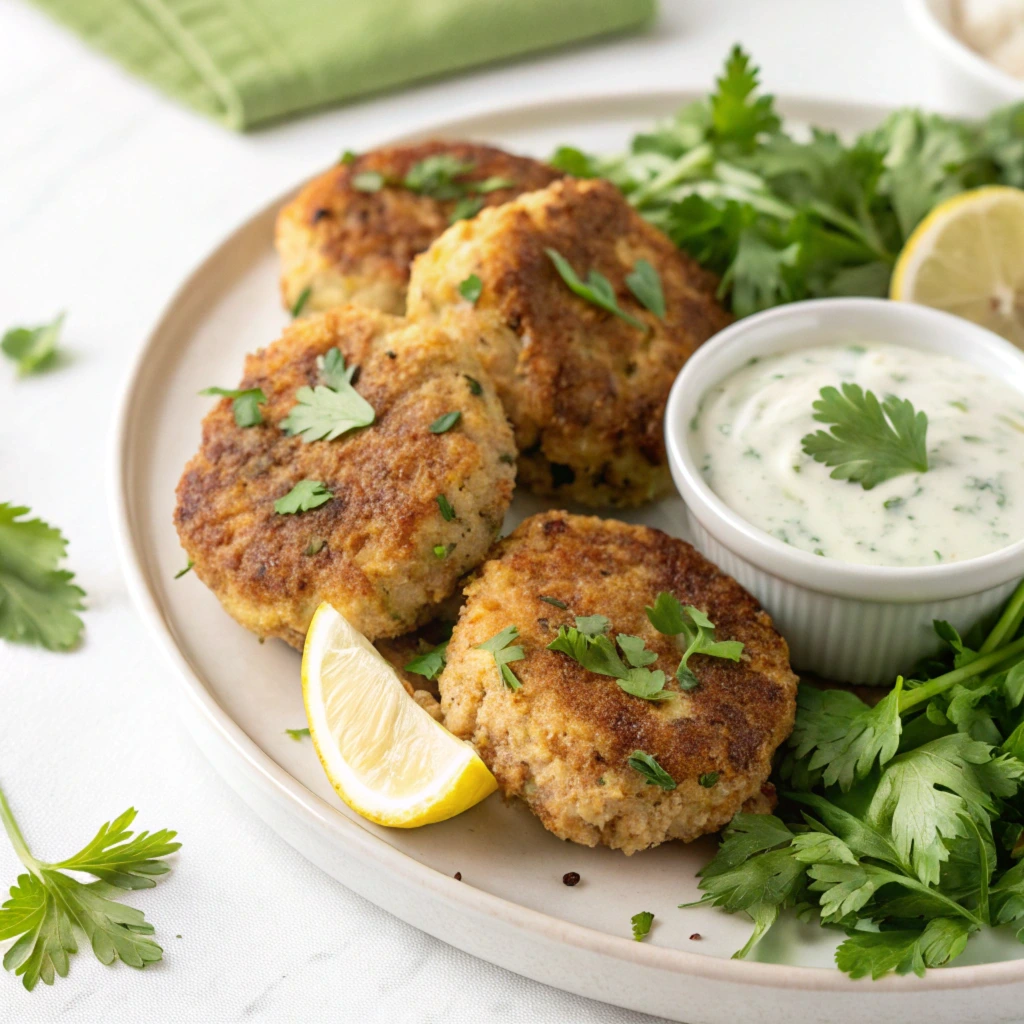
For a healthier alternative, try this baked version:
- Ingredients:
1 lb fresh lump crabmeat, 1 egg, ¼ cup mayo, ½ cup breadcrumbs, 1 tsp Dijon mustard, 1 tsp lemon juice. - Directions:
- Combine ingredients and shape into patties. Chill for 20 minutes.
- Preheat oven to 400°F. Lightly brush patties with olive oil and place on a baking sheet.
- Bake for 12-15 minutes, flipping halfway through. For added crispiness, broil for 2 minutes.
- Serve with a fresh salad or dipping sauce.
Both methods create delicious crab cakes, but your choice depends on whether you prioritize crispy indulgence or a healthier profile.
Frequently Asked Questions
Is It Better to Fry or Bake Crab Cakes?
The answer depends on your priorities. Frying crab cakes delivers an ultra-crispy crust and bold flavor, making it the go-to option for those craving indulgence. Meanwhile, baking crab cakes is the healthier choice, offering fewer calories and less fat. For those watching their diet but still seeking delicious results, baking is a win. Both methods yield tasty crab cakes, but each has unique advantages to suit different preferences.
What’s the Best Way to Cook Premade Crab Cakes?
Premade crab cakes are versatile and can be fried, baked, or even broiled. To maintain crispiness, pan-frying in a small amount of oil is a popular method. However, baking at 400°F ensures even cooking with minimal effort. For an extra touch, finish with a quick broil to add some golden color.
Why Do Crab Cakes Fall Apart When Cooking?
Crab cakes often fall apart due to a lack of binding ingredients. Ensure your mixture includes eggs and breadcrumbs or mayo to hold the patties together. Chilling the cakes before cooking also helps them stay intact, regardless of whether you choose to fry or bake.
Can You Freeze Crab Cakes?
Yes! Crab cakes freeze well, making them convenient for meal prep. Simply shape uncooked patties, freeze on a tray, then store in an airtight container. When ready to cook, thaw in the fridge overnight and bake or fry as directed.
Which Method is Right for You?
Tailoring the Cooking Method to Your Priorities
Choosing between frying and baking comes down to your goals. Are you after a rich, indulgent treat? Then frying crab cakes is the way to go. The crispy, golden crust is hard to beat when cooked in hot oil. On the other hand, if you’re looking for a lighter, healthier meal, baking crab cakes is the clear choice. This method cuts back on calories and fat without sacrificing flavor.
Final Thoughts on Frying vs. Baking
Both methods have their strengths. Frying excels in texture and boldness, while baking prioritizes health and convenience. Ultimately, the best approach is the one that matches your taste and dietary preferences. Whichever method you choose, remember that high-quality crabmeat and proper preparation are the true keys to success. Now that you’re equipped with expert tips and recipes, it’s time to get cooking and enjoy your perfect crab cakes!

